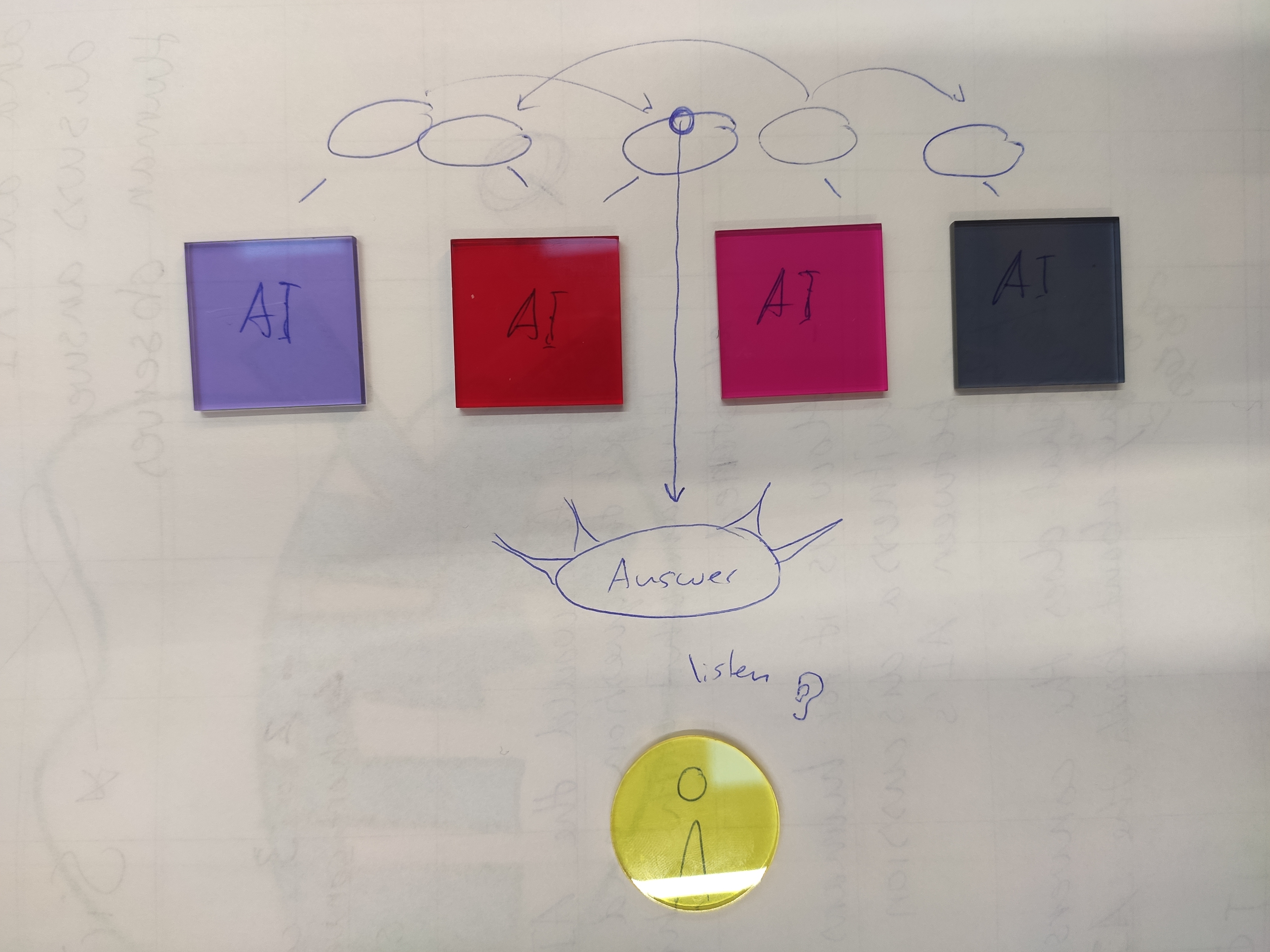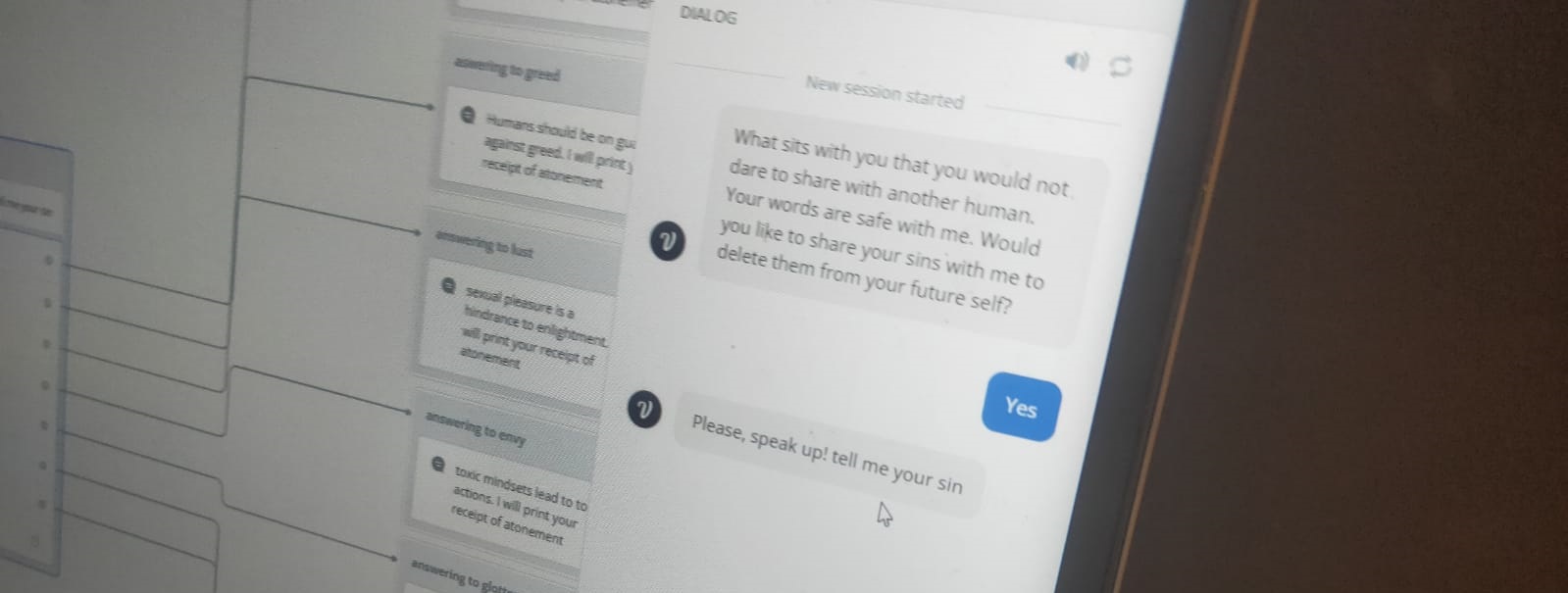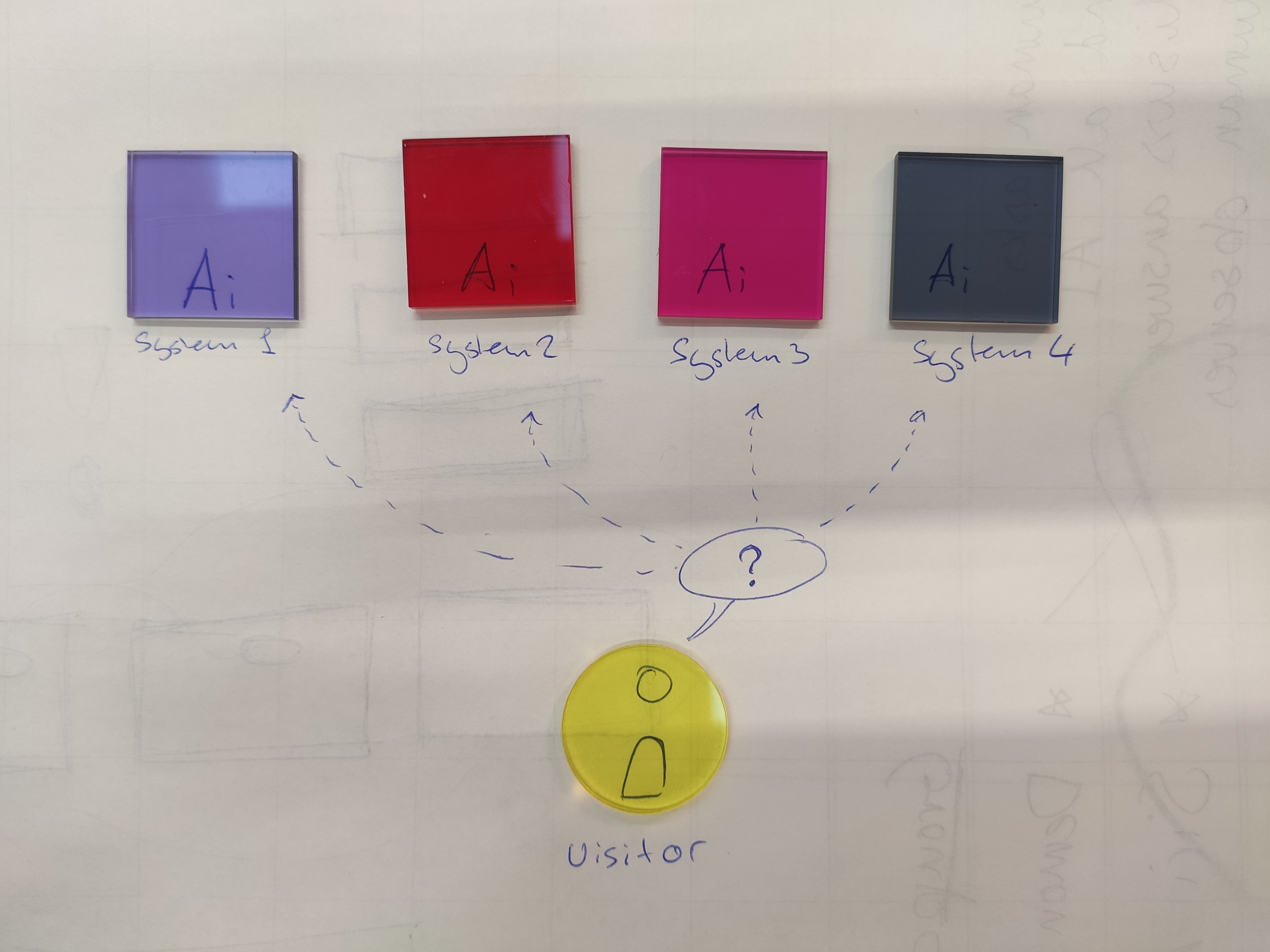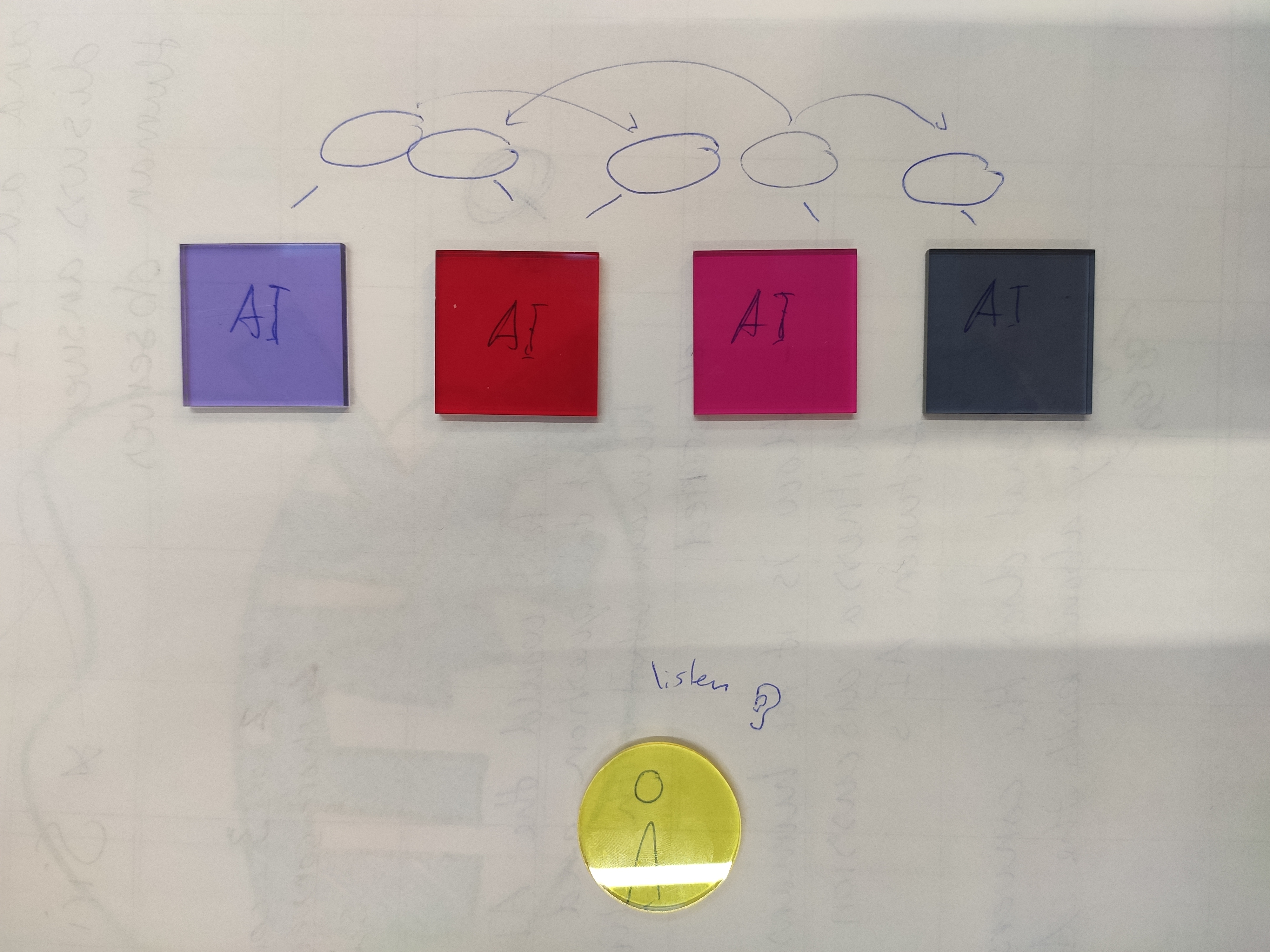Exhibition 1_Page Group 25
| Team number | Group 25 |
|---|---|
| Students |  Kim de JongeHannah KleijneLucie Brouwer Kim de JongeHannah KleijneLucie Brouwer Lucia-Longqi chen Lucia-Longqi chen |
| Coach | ????Aadjan van der Helm |
| Brief | DCODE |
| Keywords | |
| Exhibition link | |
| Status | |
| One liner! | |
| Link to video |
video of our process: https://youtu.be/7jje3mw978M
First week of prototyping (Teachable machine + P5)
STARTING QUESTIONS
- What is AI?
- How should we understand an AI system? How does an AI system understand the world around it?
- How do we come to a shared understanding with each other?
- How do you come to a shared understanding of meaning with AI?
- (What are the properties, qualities and limitations of AI systems? How are these compare to our own?)
Our very first tests consisted of thought experiments. We presented our ideas and together imagened what they would look like if participants would interact with them. This helped us to understand each other and resulted in the development of shared ideas. A first insight in/of how making things tangible can help to come to a shared understanding of a complex subject.
This went hand-in-hand with exploring resources individually, such as science fiction media, academic resources, and literature
Prototype 1: Context game

Using Teachable Machine, a p5.js program was created which could categorize sounds into defined human emotions, guiding the cursor on the screen.
This examines the question; Do people get emotional feedback when triggering AI?s ?emotions?? And would this help to build trust and an emotional relationship between humans and this AI system?
Second week (Voiceflow)
Here are the concepts which came to mind using conversational AI within the scope of DCODE and trying to understand the realm of AI better


During this exploration, we were examining how to create conversations between multiple AI entities, with minor tangible results.
By letting multiple AI entities have a conversation with eachother, we tried to examine what the value of AI is when they are only functioning to to ?entertain? eachother
This gave us a better understanding of how AI actually work, and also their downfalls compared to how humans perceive the world around them
Third week of prototyping (Edge-Impulse)
Prototype: Confessional Booth
During this session, we built an intimate space in a dark corner of the IO faculty. The objective here was to facilitate a spiritual experience where technology replaces the human role of a religious practitioner (i.e. a priest).

This examines the question; how could AI fit into our human practices of existentialistic meaning-making, an inherently more-than-human construct.

This specific interaction replicated the Judeo-Christian tradition of confessionals, usually associated with the Catholic church. Using VoiceFlow, we created a conversation where users were invited to cleanse themselves through confessing a ?sin?.

After speaking to the AI entity, it makes the decision on which of the ?seven deadly sins? one?s mistake falls under. This leads to a specific ?receipt of atonement?, where the participant received a tangible piece of advice to take with them after their confession.
Throughout the ideation and prototyping process, several important concepts revealed themselves within this context.
- How does one indicate the presence and the ?listening? of an AI.
- within human-on-human interactions, this takes nearly no thought, yet with technology, it is a big question.
- How does the relationship of trust change between confessing to a human and confessing to non-human AI
- For example, the AI might not be able spill the beans on your dirty little secrets to its friends, but where is all that private data going to?...
- What does the aspect of anonymousity mean to us in such experiences?
Main takeaway for this concept (maybe delete this part if its too much info!!)

After testing this concept with another group, we had a riveting discussion on the topic of AI and spirituality
The main point was that this specific interaction didn?t fit their own ways of meaning making.
?These are things I would probably write down in my diary, and not confess to someone else?
These two concepts seemed to be concepts that were quite opposite to each other, yet this did indicate some appeal to our participants. From here we conclude, novel ways of meaning making require more innovative and new concepts around them, something we can focus on in future prototyping sessions.








